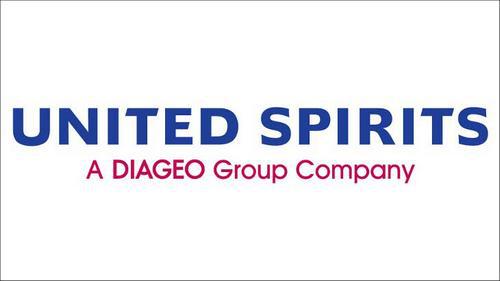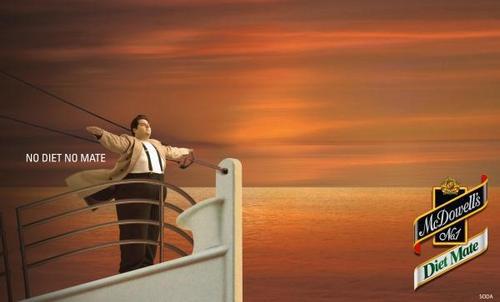The Marketing mix of United Spirits analyses the 4Ps of United Spirits, including the Product, Price, Place, and Promotions. United Spirits Limited is the second-largest spirit manufacturing company by volume and, by default, the largest in India and the region. Abbreviated to USL, the company was founded by Angus McDowell at Fort St. George, British India, in 1826 and is now a subsidiary of Diageo.
It is headquartered at UB Tower, located in Bangalore, Karnataka, but influences at least 37 countries where it exports its products. Today, the company is bragging of at least 140 liquor brands, with 15 selling at least one million cases yearly and three doing at least 10 million cases annually.
About United Spirits
- Type: Public limited company
- Industry: Alcoholic beverages
- Founded: 1826
- Founders: Angus McDowell
- Headquarters: Bangalore, Karnataka, India
- Area served: Worldwide
- Current CEO: Hina Nagarajan
- Number of employees: 3,200
- Major products: Whisky, vodka, rum, gin, wine
Competitors
- Pernod Ricard
- Bacardi Limited
- United Breweries
- Distell International Limited
Table of Contents
United Spirits Product Strategy
United Spirits, a subsidiary of Diageo plc, offers a wide range of products in its portfolio. Leveraging a comprehensive marketing strategy, United Spirits has effectively tapped into the fastest-growing segments of the Scotch whisky market, ensuring its products are synonymous with excellence and affordability. Through strategic marketing efforts, United Spirits has fortified its brand image, appealing to a wide range of consumers by emphasizing the quality and heritage of its alcoholic drinks portfolio.
The new Product Mix of United Spirits in 2023 is as follows (Source).
- Whisky Brands: Johnnie Walker, Signature, Antiquity, McDowell’s No. 1, Royal Challenger, Director’s Special
- Vodka Brands: Smirnoff, White Mischief, Romanov
- Rum Brands: McDowell’s No.1 Rum
- Brandy Brands: Honey Bee
- Gin Brands: McDowell’s No.1
- Wine: United Spirits also has a range of wines in its product portfolio.
United Spirits Place Strategy
The company has been able to open distilleries in almost all corners and “armpits” of India and beyond. Serving over 37 countries on all continents, United Spirits not only targets the worldwide market but has been able to penetrate this global arena. All the different classes of people have products that go well with their ethnic groups, from low-income to high-income earners.
Here’s United Spirits’ place strategy.
- Extensive Distribution Network: United Spirits likely maintains a broad and efficient distribution network, ensuring its products are available in various retail outlets, bars, and restaurants across its key markets.
- Strong Presence in Urban and Rural Markets: The company might target urban and rural areas, adapting its distribution strategy to suit the market dynamics and consumer preferences in different regions.
- Partnerships with Local Distributors: Collaborations with local distributors could be a crucial aspect of their strategy, helping to enhance market penetration and customer reach.
- E-commerce and Digital Platforms: Embracing e-commerce and digital sales platforms, especially considering the increasing trend of online shopping, might be an essential part of their distribution approach.
- International Expansion: Given the global nature of the alcoholic beverage market, United Spirits might focus on expanding its international presence through exports and partnerships with overseas distributors.
United Spirits Pricing Strategy
The company understands that the highest percentage of alcohol drinkers would prefer to go for the cheapest alcohol possible within a specific segment. For this reason, most of the products released by the company are low-priced compared to others of the same quality.
It is no wonder that McDowell brands are ubiquitous in third-world countries and the middle-income earning segment. In a nutshell, the pricing strategy is based on the value and production & distribution costs. Their prices must also be compared with the alcoholic beverages already on the market.
Analyzing United Spirits’ pricing strategy involves understanding the complex dynamics of the alcoholic beverage market, consumer behavior, and competitive positioning. Here’s an overview of what United Spirits’ pricing strategy might entail:
- Premium Pricing for Exclusive Brands: United Spirits likely employs a premium pricing strategy for its high-end products like Johnnie Walker and Signature. This reflects the quality and heritage of these brands and aligns with the aspirational desires of affluent consumers willing to pay more for premium experiences.
- Competitive Pricing for Popular Brands: United Spirits might adopt a competitive pricing strategy for its widespread range, like McDowell’s or Royal Challenge. This ensures affordability for a broader customer base, particularly in price-sensitive markets, while balancing quality and cost.
- Dynamic Pricing Based on Market Conditions: The alcoholic beverage industry is highly susceptible to changes in tax policies, regulatory environment, and supply chain dynamics. United Spirits might utilize a dynamic pricing strategy to adapt to these fluctuations, ensuring profitability while remaining competitive.
- Value-Based Pricing for Niche Products: The United Spirits line might use value-based pricing for niche or specialty products, such as artisanal or limited-edition spirits. This strategy considers the perceived value to the consumer, factoring in uniqueness, craftsmanship, and the overall brand experience.
- Geographical Pricing Variations: Given its global presence, United Spirits likely adjusts its pricing strategy based on geographical locations. This involves considering local economic conditions, purchasing power, competitive landscape, and cultural factors influencing alcohol consumption.
- Promotional and Volume-Based Pricing: United Spirits might employ promotional pricing strategies, such as discounts or bundling offers, to drive sales and market penetration. Additionally, volume-based pricing could encourage bulk purchases in both retail and hospitality sectors.
United Spirits Promotion Strategy
United Spirits’ marketing mix emphasizes a diverse marketing strategy that caters to the unique preferences within the alcoholic drinks sector, focusing on innovation and consumer satisfaction. One of the marketing methods the company has been using is mergers between already established companies, thus creating a formidable force that is felt in the entire market. United Spirits Limited emerged due to the merger of Shaw Wallace, Baramati Grape Industries, McDowell & Co LTD, Triumph Distillers & Vintners LTD, Herbertsons LTD, and four other companies. The company acquired Bouvet Ladubay Distillers in the same year. The company also ensures that it produces quality liquor at a fair price for the market.
The company uses some of the top renowned brands that are highly promoted to give the company’s growth and portfolio. Some of the top brands being highly marketed include the Royal Challenge, together with McDowell’s No. 1. Fundamental renovations and innovations are done to such brands, with others being rebranded to appeal to the market the ore.
Some eye-catching and moving taglines, packaging, bottle design, and effective communication strategies are also highly used.
Some Recent Video ads and Print ads for United Spirits are:
Liked this post? Check out the complete series on Marketing Mix

